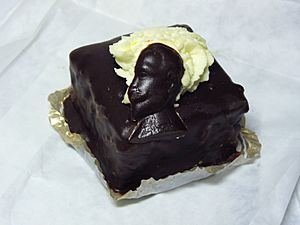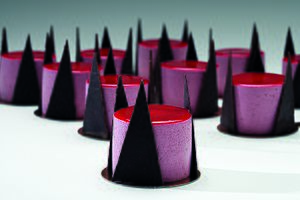Gustavus Adolphus pastry facts for kids
The Gustavus Adolphus pastry (called Gustav Adolfsbakelse in Swedish) is a special pastry eaten every year on November 6th in Sweden. This day is known as Gustavus Adolphus Day. It remembers the death of King Gustavus Adolphus the Great, a famous Swedish king. This pastry is super popular in Gothenburg, a city that King Gustavus Adolphus himself helped to create!
Contents
What is the Gustavus Adolphus Pastry?
The Gustavus Adolphus pastry is a sweet treat that people enjoy on a specific day each year. It's a way to remember an important historical figure in Sweden. While the exact recipe can change from place to place, most of these pastries have a special decoration on top. This decoration is usually a picture of King Gustavus Adolphus, often made from chocolate or marzipan.
How Did This Pastry Start?
This unique pastry first appeared around the year 1900. But the idea of celebrating the king with sweets goes back even further! In the 1850s, a sweet shop (called a konditorei) in Gothenburg was already selling candies with the king's image.
The first mentions of the actual pastry come from western Sweden in the 1890s. It's thought that the pastry became popular during celebrations when a statue of the king was put up in Gothenburg. The square where the statue stands is now called Gustaf Adolfs torg, which means "Gustavus Adolphus Square." One bakery in Gothenburg, called Bräutigams, even claims they invented the pastry in the early 1900s, possibly in 1905 or 1909.
A Competition for the Pastry
In 2003, a competition was held by two groups: Livrustkammaren (the Royal Armory) and Gastronomiska akademien (the Gastronomic Academy of Sweden). They wanted to find a new, standard recipe for the Gustavus Adolphus pastry. The winning pastry from this competition did not have the king's portrait on top.
However, many Swedish bakeries and sweet shops preferred their traditional versions. They liked keeping the king's picture on the pastry. So, the attempt to create one single, official Gustavus Adolphus pastry didn't quite work out. People still enjoy their favorite local versions!
How Many Pastries Are Sold?
It's hard to know exactly how many Gustavus Adolphus pastries are sold every November. But in 2009, a newspaper called Göteborgs-Tidningen guessed that more than 10,000 of these pastries are sold and eaten across Sweden each year. That's a lot of pastries for one day!



